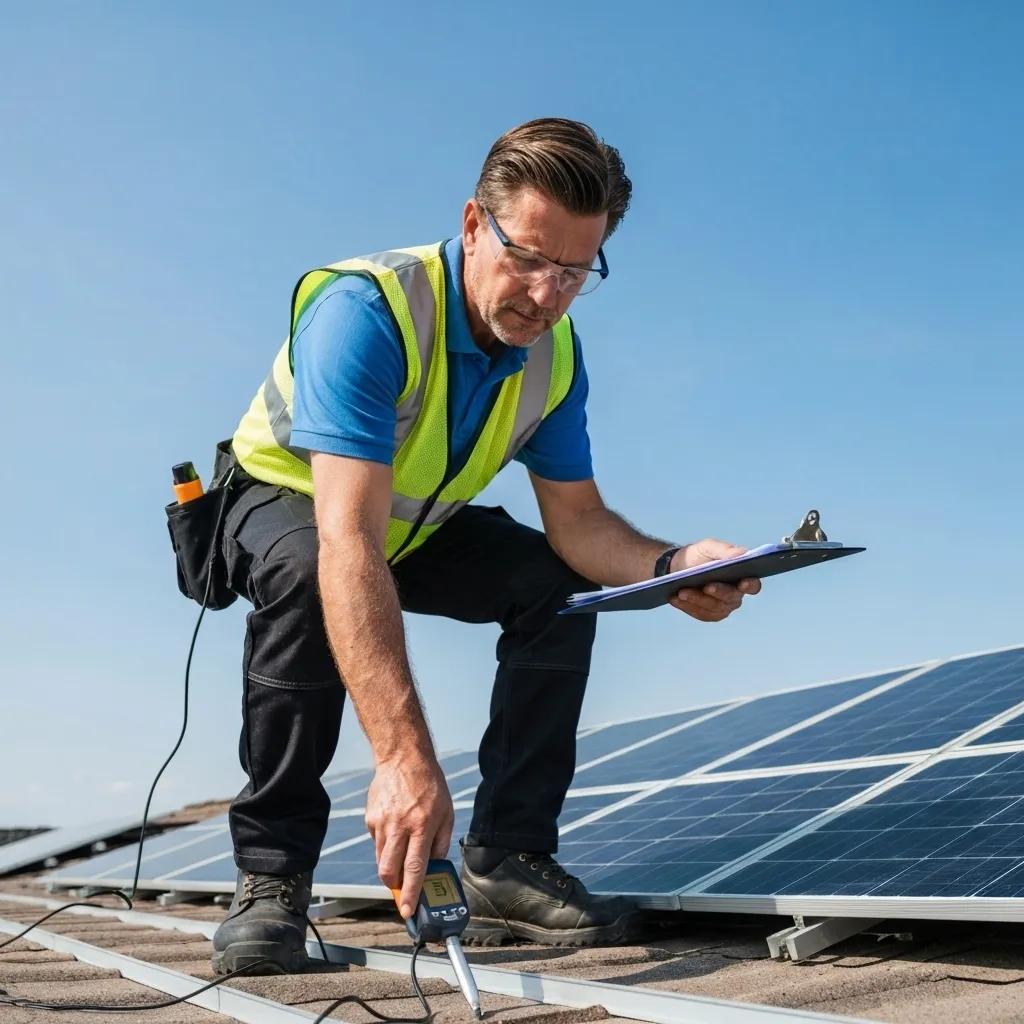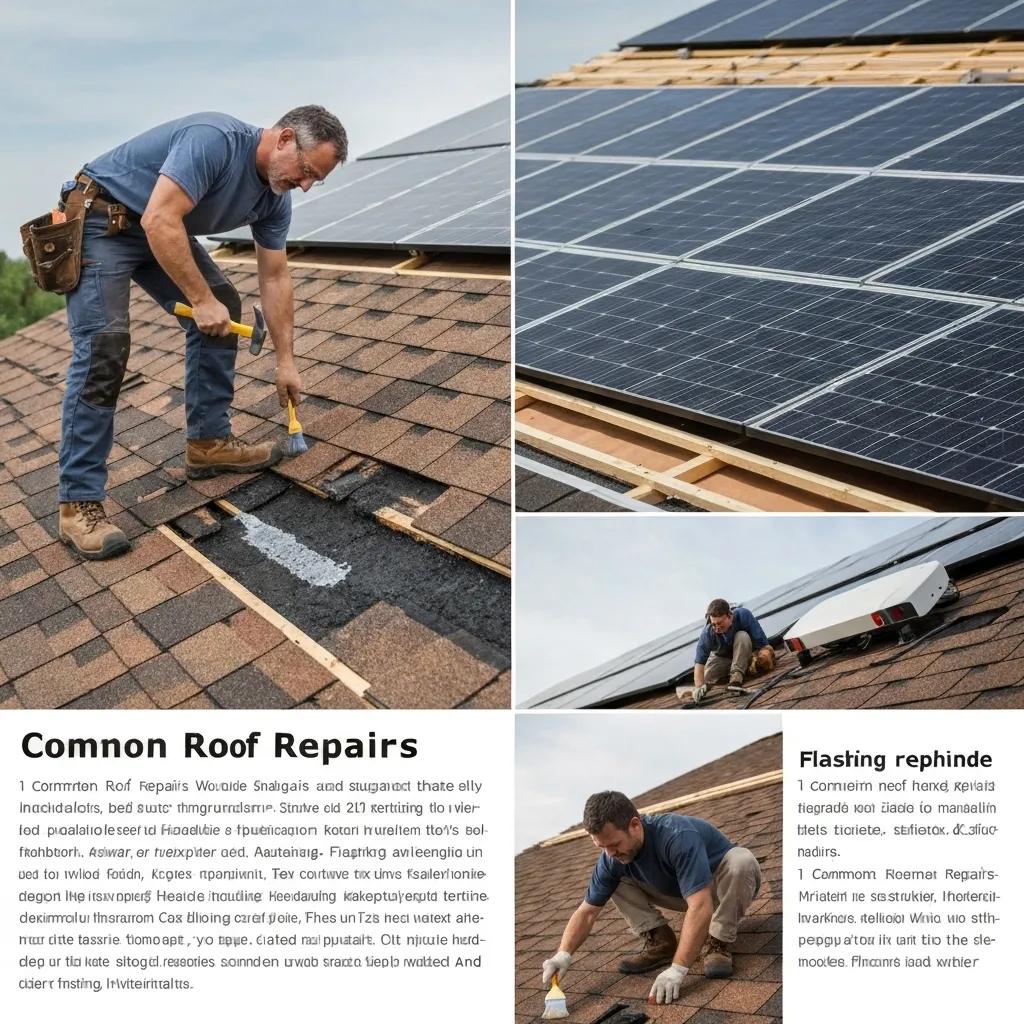
Is Your Roof Ready for Solar? Essential Checks and Prep for a Flawless Solar Panel Setup
Is your roof primed to support a robust solar energy system? A thorough solar panel roof inspection is the cornerstone of a long-lasting photovoltaic array, confirming structural soundness, pinpointing any leaks, and ensuring optimal panel mounting. This guide will walk you through what a pre-solar installation roof assessment entails and why it’s crucial. We’ll cover typical inspection costs in Las Vegas and Nevada, common repair needs, when a complete roof replacement makes the most sense, the technical specs for secure panel attachment, financing options for upgrades, and best practices to safeguard both your roofing and solar warranties. Discover how Vegas Solar LLC expertly blends roof health with energy savings, offering complimentary consultations and flexible financing.
What Exactly Is a Pre-Solar Installation Roof Assessment and Why Does It Matter So Much?
A pre-solar installation roof assessment meticulously evaluates your roof‘s age, materials, and structural integrity to preempt any issues once panels are in place. This inspection identifies loose shingles, hidden water damage, and framing vulnerabilities that could compromise panel security and system performance. For instance, confirming that your rafters and sheathing meet local load requirements prevents costly future repairs and protects your investment in clean energy.
Before you book your solar installation, homeowners gain these key advantages:
- Enhanced Safety – Spotting structural concerns early eliminates collapse risks and guarantees secure panel mounting.
- Smart Savings – Tackling minor repairs before installation sidesteps expensive emergency fixes beneath your new solar array.
- Warranty Assurance – A certified inspection provides documented proof of your roof’s condition, protecting both your roofing and solar warranties.
- System Durability – A solid roof foundation directly boosts the lifespan and energy output of your solar panels.
By securing these benefits, a roof assessment paves the way for targeted repairs and a dependable solar installation.
What Does a Solar Roof Inspection Entail?

A solar roof inspection involves a detailed visual check of surface materials, moisture readings on the decking, thorough attic and rafter examinations for rot or mold, and load-bearing capacity calculations to ensure compatibility with solar arrays. This comprehensive review uncovers all potential factors that could diminish solar efficiency or lead to water intrusion after panels are installed.
How Does Your Roof‘s Condition Impact Solar Panel Lifespan?
Your roof‘s condition directly influences panel longevity by affecting the seal integrity around mounting points, preventing water from seeping under modules, and maintaining even load distribution. When roofing materials degrade, vibrations from the panels can loosen attachments, leading to minor leaks and accelerated wear on both the roof and the photovoltaic components.
When Should You Schedule Your Roof Inspection Before Solar Installation?
It’s best to schedule your roof inspection at least 6 to 12 months before your planned solar installation. This timeframe allows ample opportunity for any necessary repairs or replacements. Early scheduling helps avoid installation delays and ensures your roof is ready in sync with your solar permit timelines.
What’s the Typical Cost for a Solar Roof Inspection in Las Vegas and Nevada?
In Las Vegas, a solar roof inspection generally costs between $150 and $500. This price reflects local labor rates, the complexity of your roof, and its overall size. This one-time investment covers essential documentation of your roof‘s health, structural calculations, and moisture testing, all vital for a reliable solar setup.
Roof Inspection Costs in Las Vegas – English
The cost for a solar roof inspection in Las Vegas typically falls between $150 and $500, depending on factors such as roof size and complexity. This fee covers a thorough assessment of the roof‘s condition, including its structural integrity and moisture levels, which is crucial for a dependable solar installation.
Consumer Affairs, “How Much Does a Roof Inspection Cost?” (2024)
What Factors Influence the Price of a Solar Roof Inspection?
Inspection pricing can vary based on the roof‘s pitch, the type of materials used, how accessible it is, and whether specialized equipment like infrared thermography is needed. More intricate roof designs and premium materials naturally require more time on-site, increasing the associated costs.
Are Roof Inspections Typically Included in Solar Installation Packages?
While many solar installers include a basic roof evaluation as part of their package, a detailed structural inspection and in-depth moisture analysis often come with an additional charge. It’s important to clarify with your provider exactly what level of assessment is covered to avoid unexpected expenses.
How Can You Get a Free or Low-Cost Roof Inspection for Solar Readiness?
Look into local incentives and special promotions that might cover inspection costs or offer discounts. Homeowners can often qualify for a complimentary evaluation by scheduling through Contact Vegas Solar LLC – Get Your Free Solar Quote Today before committing to a full installation.
What Common Roof Repairs Are Needed Before Installing Solar Panels?

Essential roof repairs before solar installation focus on addressing leaks, damaged shingles, and worn flashing to prevent water from infiltrating beneath panel mounts. Upgrading ventilation and replacing compromised underlayment also ensure panels operate efficiently without causing heat-related roofing issues.
Key repair categories include:
- Leak Sealing – Meticulously repairing any punctures around vents, chimneys, and mount penetrations to maintain a completely watertight seal.
- Shingle or Tile Replacement – Swapping out cracked or curled roofing materials to create a smooth, secure surface for panel rails.
- Flashing and Ventilation Upgrades – Installing durable, corrosion-resistant flashing and effective ridge vents to balance attic humidity and extend the roof’s service life.
These targeted repairs protect both your roof and solar investments, paving the way for uninterrupted energy production.
How Do You Spot Roof Leaks and Water Damage Before Solar Installation?
Carefully inspect attic ceilings for any signs of water stains, use moisture meters on the roof decking, and examine flashing junctions around any roof protrusions. Catching hidden leaks early prevents the growth of mold and unseen structural decay.
When Is It Time to Replace Shingles or Tiles for Solar Readiness?
You should consider replacing shingles or tiles when more than 10% to 15% show signs of curling, cracking, or granule loss, or if they’ve surpassed half their expected lifespan. A fresh roofing surface provides a more secure foundation for panel rail mounts and aligns well with the typical 25–30-year warranty of photovoltaic systems.
Why Are Upgrading Flashing and Ventilation Crucial Before Going Solar?
Proper flashing around any roof penetrations is vital to prevent moisture from entering at mount points. Enhanced ventilation, in turn, helps dissipate heat buildup beneath the panels, reducing thermal stress on shingles and boosting overall system efficiency.
Do I Need a Brand New Roof for Solar Panels? When Is a Full Roof Replacement Recommended?
A complete roof replacement is advisable when your existing roof has less than 10 to 15 years of useful life remaining or if widespread damage compromises its structural integrity. Aligning your roof‘s longevity with the 25 to 30-year lifespan of solar panels maximizes your return on investment and minimizes the need for disruptive roof work after your solar system is installed.
Asphalt Shingle Lifespan – English
Asphalt shingles typically last between 20 to 25 years, a key factor when deciding if a roof replacement is necessary before installing solar panels. The article points out that a roof with under 10 years of remaining life is a prime candidate for replacement.
National Roofing Contractors Association, “Roofing Materials Guide” (2023)
How Do You Calculate Your Roof‘s Lifespan Against Solar Panel Durability?
Assess your roof‘s installation date, its material warranty, and its current condition to estimate its remaining service life. If the remaining years fall short of your solar panels’ expected durability, replacing the roof beforehand prevents costly removal and reinstallation later.
What Are the Advantages of Combining Roof Replacement with Solar Installation?
Coordinating your roof replacement with your solar panel installation can significantly reduce labor costs, streamline the permitting process, and ensure warranties for both roofing materials and photovoltaic modules are managed within a single project timeline.
Which Roofing Materials Are Best Suited for Solar Panel Installation?
Metal and standing-seam roofs offer exceptionally durable, corrosion-resistant surfaces that are perfect for long-term solar panel arrays. Asphalt shingles, when in good condition, remain a cost-effective and compatible option for most rail-mount systems.
What Are the Solar Panel Roof Requirements for a Safe and Efficient Installation?
Safe and efficient solar installations demand roofs with sufficient load-bearing capacity, appropriate pitch, reliable waterproofing, and fire-resistant materials. Ensuring these critical attributes prevents system failures and optimizes energy production for decades to come.
Key technical requirements include:
- Structural Capacity – Roof framing must be able to support an additional 3–5 pounds per square foot for solar arrays without any sagging or deflection.
- Roof Pitch and Orientation – A pitch between 15° and 40°, ideally facing south, maximizes solar irradiance and helps prevent water from pooling.
- Material Compatibility – Fire-rated asphalt shingles, tile, or metal panels must be compatible with approved attachment systems.
Meeting these conditions is absolutely essential before any solar mounts are applied.
How Does Roof Structural Integrity Affect Solar Panel Mounting?
Structural integrity ensures that your rafters, trusses, and sheathing can safely bear the combined weight of the solar panels, racks, and any potential snow loads. Insufficient support poses a serious risk of framing failure and panel detachment, especially during high winds.
What Local Building Codes and Permits Impact Roof Readiness in Las Vegas?
Las Vegas requires building permits that verify wind-resistance ratings, fire classifications, and minimum live-load capacities. Compliance ensures that both your solar and roof upgrades meet the stringent regulations set forth by Clark County and the state of Nevada.
How Do Nevada’s Weather Conditions Influence Roof Preparation for Solar?
Nevada’s intense summer heat, monsoon storms, and occasional flash floods necessitate the use of UV-resistant roofing materials, reinforced flashing, and adequate drainage systems to protect both your roof and your photovoltaic system.
How Can Financing Options Help Cover Roof Repairs Before Solar Installation?
Financing solutions designed for combined roof and solar projects allow homeowners to upgrade their roof without needing significant upfront cash. These options spread payments over 10 to 20 years, while also enabling you to take advantage of solar tax credits and local rebates that help reduce overall costs.
What Solar and Roof Repair Financing Solutions Are Available in Nevada?
Residents in Nevada have access to PACE financing, specialized solar loans, and home equity lines that conveniently include provisions for roof upgrades, often at very competitive interest rates.
How Do Federal and State Incentives Help Offset Roof Upgrade Costs?
The federal Investment Tax Credit can cover up to 30% of combined solar and roof expenses. Additionally, Nevada utility rebates and local grants further reduce out-of-pocket costs, making these essential upgrades more affordable.
What Is the Return on Investment for Combined Roof and Solar Projects?
Combining roof replacement with solar installation typically leads to a greater increase in home value and a faster payback period. Over 25 years, this approach can result in 15% to 25% more in energy savings compared to installing solar on an older roof alone.
What Are the Best Practices to Protect Your Roof and Solar Panel Warranty?
To maintain your roof and solar warranties, it’s crucial to use certified installation methods, keep meticulous records of all inspections and repairs, and perform regular maintenance to prevent any issues that could void coverage. Obtaining third-party validation can further enhance confidence in the quality of your service.
Essential practices include:
- Use Manufacturer-Approved Mounts – Always employ mounting systems that have been tested and approved for your specific roofing material to ensure warranties remain valid.
- Document All Repairs and Inspections – Maintain a professional, organized record that meets the warranty requirements for both your roofing and solar panels.
- Schedule Annual Maintenance – Conduct annual checks of seals, clean your panels, and inspect flashing to proactively prevent water intrusion and thermal damage.
Adhering to these steps is key to safeguarding your warranties and ensuring the ongoing reliability of your system.
For added peace of mind, explore the “Vegas Solar LLC – Better Business Bureau Profile” to see our accreditation and customer satisfaction ratings.
How Do Roof Repairs Impact Solar Panel Warranty Coverage?
Roof repairs performed by certified professionals using compatible materials are essential. This ensures that your solar panel mount warranties remain intact by preventing moisture entry and avoiding structural shifts that could compromise the system.
What Should Homeowners Understand About Combined Solar and Roofing Warranties?
When your roofing and solar warranties overlap, it’s vital to verify that both manufacturers acknowledge combined installation protocols. This prevents any potential conflicts in coverage terms.
How Can You Maintain Roof Integrity After Solar Panel Installation?
Keep your solar panels clear of debris, conduct annual inspections of the attachment points, and promptly repair any signs of sealant wear. These steps are crucial to prevent leaks and protect both your roofing and photovoltaic investments.
Roof repairs and inspections are fundamental to a successful solar project, confirming safety, ensuring longevity, and validating financial sense. Partnering with trusted experts in Las Vegas and Nevada simplifies both roof upgrades and renewable energy installation, delivering enduring energy savings. For personalized guidance, reach out to Contact Vegas Solar LLC – Get Your Free Solar Quote Today and schedule your comprehensive consultation.
